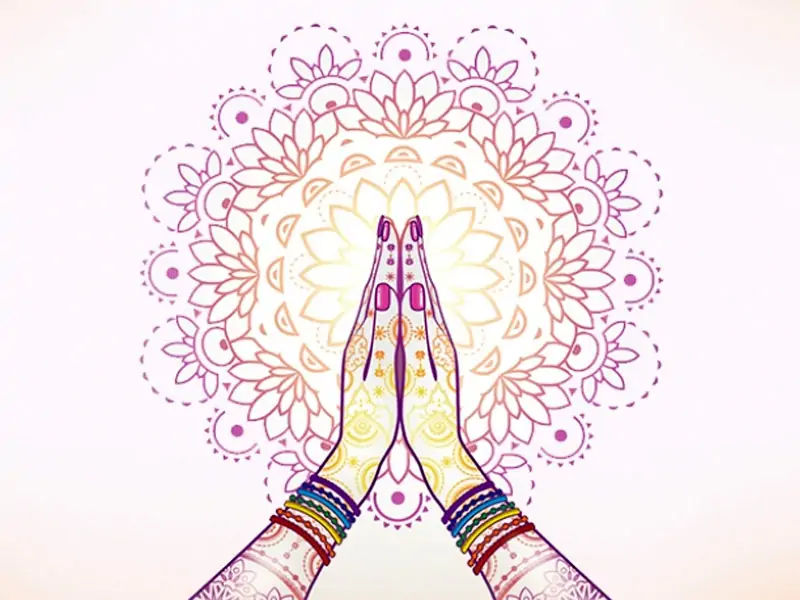The Magnificence and Serenity of Indian Culture

India, the land known for its culture, traditions, and customs, has come a far way now. But till today, India upholds its culture, traditions, and customs and these values are one of the major reasons for India’s fame in the outside world. The “Unity in Diversity” can be witnessed well in India, and the soul and heart of India lies in its culture, traditions, and customs.
The traditions, culture, and customs of India involve some amazing and unique ways of performing the rites and rituals, celebration of festivals, and so on. The customs and traditions of Indian culture are something that needs to be explored. Trust me, it is so much fun to explore Indian culture. Sometimes, people belonging to the world outside India find the culture, traditions, and customs of India intriguing. It has originated most of these cultures from the Ancient Indian texts and scriptures.
If you are also ready to explore the Indian culture, traditions, and customs, read this blog till the end!
SOME FASCINATING INDIAN CULTURE, TRADITIONS, AND CUSTOMS
Indian Greeting- The Namaste

One of the most popular Indian customs is the way Indian greets i.e. the Namaste. And in the recent pandemic, this greeting gesture got popular all over the world. And we have seen many popular personalities like Barack Obama performing Namaste on various occasions. The greeting gesture of Namaste holds great significance. The gesture of Namaste or Namaskar is one of the five greeting gestures as mentioned in the Hindu scriptures, the Veda, and is most widely used too. This gesture translates to “I bow to you” and the greeting each other with the gesture means “My our minds meet”. The gesture is showed by the folded palms placed before the chest. It is a cute and simple gesture.
Fasting

Fasting in India is an integral part of its culture, traditions, and customs. Known as fasts, Vrats, or Upwas, fasting is a way to represent sincerity and gratitude to the Gods and goddesses. People all over the country observe fasts at different festivals and occasions. Some even observe fast every week on some particular days in the favour of a particular God or goddess associated with that specific day. Basically, fast is observed to express the prayers and gratitude with the mindset of cleansing of all the sins that a person has committed till the day of fast.
The rules and regulations of the fast follow that occasion and day. We can trace the origination of fast from the Vedic ritual of kindling the sacrificial fire for sacrifice. Hence, it can be believed that people observe fasts when they have to kindle or rekindle the domestic fires kept in their homes to perform the daily sacrifices.
Religious Symbols
In Indian culture, traditions, and customs, religious symbols play an important role, too. The ancient Indian traditions and scriptures comprise so many signs and symbols that convey multiple meanings. We can take the best example in this context of Swastika, as per the Indian context. We regard it as the symbol of Lord Ganesh, the one who removes obstacles. The arms of the Swastika convey so many meanings such as they signify four Vedas, the four constellations, or four primary aims of human pursuit.
Dresses of India
The dresses of India reflects well its diverse culture, customs, and traditions. Basically, Indian culture and tradition support sari, and Indian sari can be styled in so many ways. Sari is nothing but just a single long cloth that doesn’t require any stitching, but still adds to the beauty of a woman looks graceful and can be styled in so many ways. Both the beauty of Indian culture and the comfort of the person wearing it have been kept in the mind before designing this typical Indian dress.
The concept of Atithi Devo Bhavah
The concept of Atithi Devo Bhavah forms the core of the Indian tradition of hospitality. ‘Atithi Devo Bhavah’ translates to, ‘equivalent to God. This saying has been taken from the Sanskrit verse taken from the Hindu scriptures. The concept of ‘Athithi Devo Bhavah has now become a part of the Code of Conduct of the Indian society, culture, and traditions. According to the Indian customs, traditions, and culture, guests are always treated equivalent to God and are given great hospitality.
Eating with hands
Eating with hands doesn’t sound good to those who prefer Western culture, but it is of significant benefit and hence it has been included in the Indian traditions. Fingers are good receptors of heat and hence they prevent the mouth from burning when the hot food is kept inside the mouth as one gets to touch and feel the temperature of the food. However, as per the Indian culture, right hands only should be used for eating as the left is considered being dirty. Besides this, one should always wash his/her hands before eating.
There are so many other fascinating Indian cultures, traditions, and customs too, but these are some most renowned and interesting ones. People living far away from India to admire Indian culture, tradition, and this makes India a special country from the rest.

